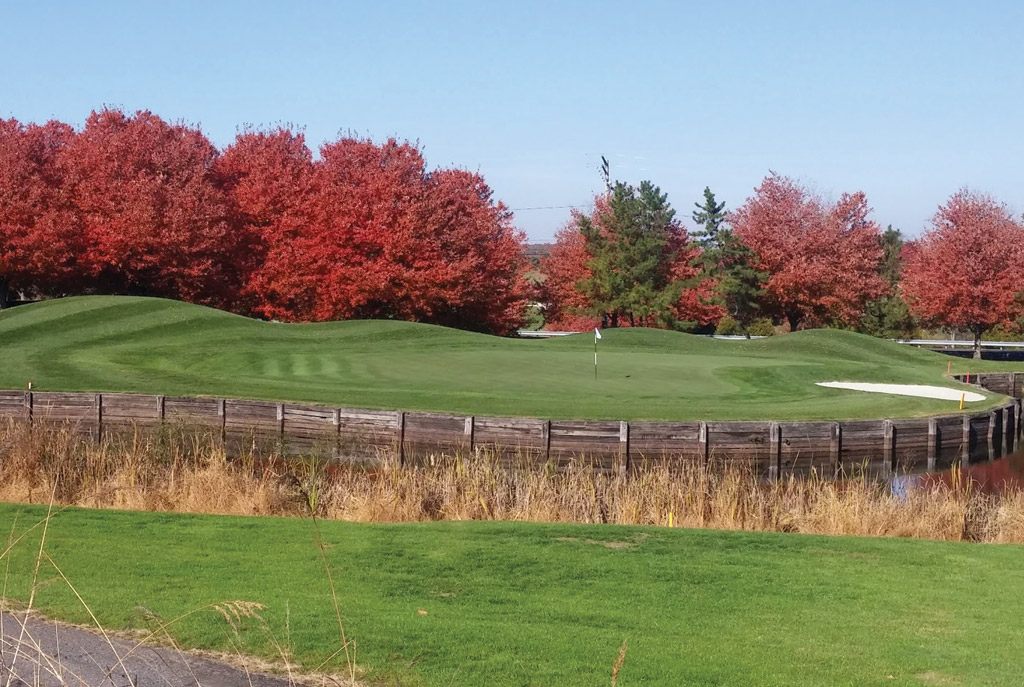[…]and use this information when making similar decisions in the future. Observe and document turf conditions regularly (daily, weekly, or monthly, depending on the pest), noting which pests are present, so that informed decisions can be made regarding the damage they are causing and what control strategies are necessary. Next: Pesticide […]
[…]of a pesticide product to register every pesticide product each year with the State Chemist Section before that product can be sold or distributed in the state. The Maryland Pesticide Database is a searchable database of all registered pesticides. In Maryland, pesticide storage areas must meet the following minimum requirements (COMAR15.05.01): The storage area must be secured or locked to prevent unauthorized access. Pesticides must be stored in a separate building or, at a minimum, must be separated by a physical barrier from living and working areas and from food, feed, fertilizer, seed, and safety equipment. A warning sign approved […]
[…]in which herbicides are intelligently selected and judiciously used when needed. For more information on controlling weeds in Maryland, including herbicide recommendations, see: Broadleaf Weed Control in Established Lawns. 2005. University of Maryland. Herbicides for Crabgrass and Goosegrass Control in Turf. 2008. University of Maryland. Guide to Controlling Weeds in Cool Season Turf. 2016. University of Maryland Extension. Best Management Practices To prevent weed encroachment, adopt or maintain cultural practices that protect turfgrass from environmental stresses such as shade, drought, and extreme temperatures. To reduce weed infestation, address improper turf management practices, such as the misuse of fertilizers and chemicals, […]
[…]sewage treatment plants, storm sewers, and runoff from urban and rural areas. For more information on state programs related to surface water quality, see MDE’s Surface Water Quality Standards. Water quality information can be found in MDE’s Water Quality Data. Surface waterbodies not meeting surface water quality standards may be subject to pollution limits, also known as the Total Maximum Daily Load (TMDL). TMDLs establish the maximum amount of an impairing substance or stressor that a waterbody can assimilate and still meet water quality standards and allocates that load among pollution contributors. TMDLs are a tool for implementing state water […]
[…]of the physical and chemical characteristics that determine a pesticide’s interaction with the environment: solubility, adsorption, persistence, and volatilization. These characteristics influence the potential for pesticide runoff, leaching, or drift. Once applied, pesticides can move off-site in several ways: in water, in air, attached to soil particles, and on or in objects, plants, or animals. To prevent the off-site movement of pesticides, site-specific characteristics and prevailing conditions should be evaluated, in addition to the selection of the appropriate pesticide. Site-specific characteristics, such as soil type, depth to the water table, geology, and proximity to surface water should all be considered […]
[…]greens can smooth out minor surface irregularities, aiding in the management of thatch accumulation. Use only weed-free topdressing materials with a particle size similar to that of the underlying root zone to dilute thatch. Topdressing the playing surface with sand improves surface firmness and smoothness, dilutes thatch, improves recovery from turf thinning or cultural practices, and, over time, modifies the root zone. Photo credit: Chris Harriman. Next: […]
[…]available for daily maintenance. Select cultivars based on an evaluation of the site and climate conditions. Consider bunker entry and exit points. Consider wear patterns and create adequate space for ingress/egress points on greens, tees, fairways, and bunkers. Select the proper color, size, and shape of bunker sand to meet needs. Define play and non-play maintenance boundaries. Next: […]
[…]storage of fuel may vary. Best Management Practices Locate fueling facilities under roofed areas with a concrete (not asphalt) pavement. Areas should be equipped with spill-containment and recovery facilities. Use of above-ground fuel tanks is preferred. Next: Waste […]
[…]P application if an existing turfgrass area is being overseeded but the area is not being tilled. For example, overseeding existing tees or fairways using a slicer-seeder would require a soil test before P can be applied. No P can be applied between to a seedbed or an area to be sodded between November 15 and March 1. No N can be applied to a seedbed or an area to be sodded between December 1 and March 1. Between November 15 and November 30, 0.5 pounds actual N per 1000 ft2 can be applied, but only using a soluble N […]
[…]frequency, shade, mowing equipment, time of year, root growth, and abiotic and biotic stress. For example, mowing frequency affects turfgrass growth habit. Frequent mowing increases tillering and shoot density, but also decreases root and rhizome growth. Therefore, mowing practices should balance these two physiological responses to allow quick turf recovery through decisions related to height of cut, frequency, and mowing patterns. Mowing too infrequently results in alternating cycles of vegetative growth followed by scalping, which further depletes food reserves of the plants. Next: Height of […]

